
Copernical Team
Benchmark Space Systems achieves orbital deployment of Xantus Electric Propulsion System
 Benchmark Space Systems has announced the successful deployment of its Xantus electric propulsion system aboard Orion Space Solutions' 12U cubesat in low Earth orbit (LEO). This development marks the first space-based operation of Benchmark's electric propulsion technology, launched via the SpaceX Transporter-10 rideshare mission.
The Xantus system is now poised for a comprehensive health
Benchmark Space Systems has announced the successful deployment of its Xantus electric propulsion system aboard Orion Space Solutions' 12U cubesat in low Earth orbit (LEO). This development marks the first space-based operation of Benchmark's electric propulsion technology, launched via the SpaceX Transporter-10 rideshare mission.
The Xantus system is now poised for a comprehensive health After decades in space Voyager 1's conclusion nears
 For nearly 50 years, NASA's Voyager 1 mission has competed for the title of deep space's little engine that could. Launched in 1977 along with its twin, Voyager 2, the spacecraft is now soaring more than 15 billion miles from Earth.
On their journeys through the solar system, the Voyager spacecraft beamed startling images back to Earth-of Jupiter and Saturn, then Uranus and Neptune and the
For nearly 50 years, NASA's Voyager 1 mission has competed for the title of deep space's little engine that could. Launched in 1977 along with its twin, Voyager 2, the spacecraft is now soaring more than 15 billion miles from Earth.
On their journeys through the solar system, the Voyager spacecraft beamed startling images back to Earth-of Jupiter and Saturn, then Uranus and Neptune and the ExoTrack enhances GEO satellite management
 In a new advancement for satellite operations, ExoAnalytic Solutions unveiled ExoTrack, a new service designed to enhance the management of geosynchronous orbit (GEO) satellites. ExoTrack sets a new industry standard by offering unparalleled accuracy, reliability, and cost efficiency.
ExoTrack has already demonstrated its value, having been tested and validated by select companies over the
In a new advancement for satellite operations, ExoAnalytic Solutions unveiled ExoTrack, a new service designed to enhance the management of geosynchronous orbit (GEO) satellites. ExoTrack sets a new industry standard by offering unparalleled accuracy, reliability, and cost efficiency.
ExoTrack has already demonstrated its value, having been tested and validated by select companies over the Operations begin to de-ice Euclid's vision
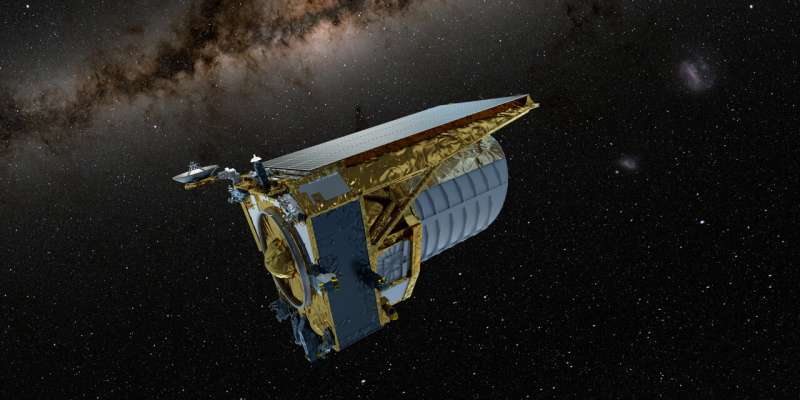
A few layers of water ice—the width of a strand of DNA—are starting to impact Euclid's vision; a common issue for spacecraft in the freezing cold of space, but a potential problem for this highly sensitive mission that requires remarkable precision to investigate the nature of the dark universe.
NASA's Swift temporarily suspends science operations
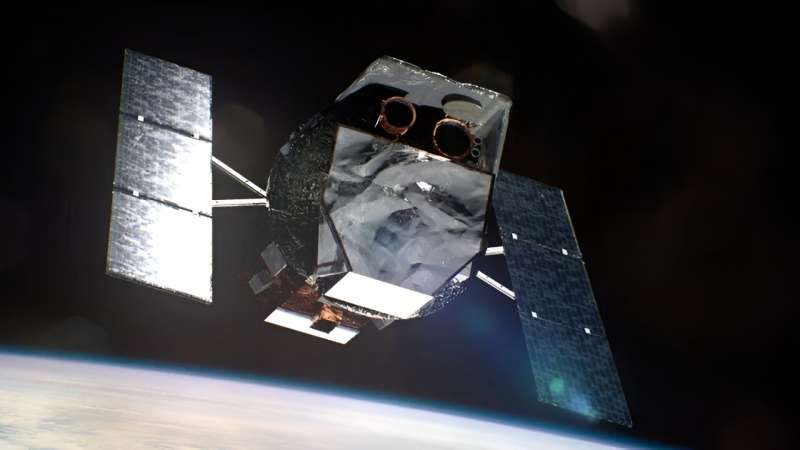
Creeping ice clouding vision of Europe space telescope Euclid

Scientists are trying to melt a thin layer of ice that is increasingly clouding the vision of the "dark universe detective" space telescope Euclid, the European Space Agency said on Tuesday.
It is the latest of several technical setbacks for the wide-eyed telescope, which blasted off into space in July on a mission to chart a third of the sky.
By doing so, the ESA hopes Euclid will reveal out more about the nature of dark matter and dark energy, which are thought to make up 95 percent of the universe but remain shrouded in mystery.
During checks in November, the team on the ground first noticed that they were losing a little light coming into the telescope's visible light imager, Euclid instrument operations scientist Ralf Kohley told AFP.
Microgravity found to cause marked changes in gene expression rhythms in humans
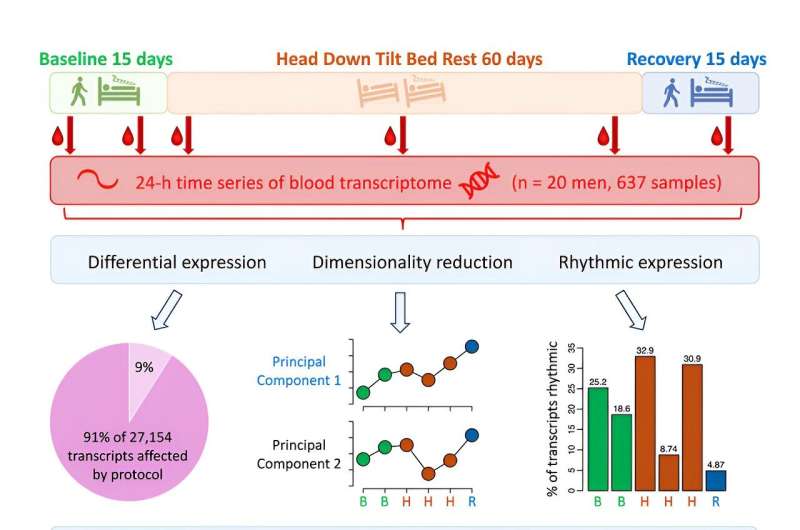
Simulated effects of microgravity, created by 60 days of constant bed rest, severely disrupts rhythmic gene expression in humans, according to a new study from the University of Surrey published in iScience.
Astronauts exposed to microgravity experience changes to physiology, including immune suppression, increased inflammation, and reduced muscle mass and bone density. With the increase in human spaceflight, it is important to understand changes in the molecular mechanisms underlying these changes.
Lead author Professor Simon Archer, Professor of Molecular Biology of Sleep at the University of Surrey, said, "This unique study represents the largest longitudinal dataset of time series gene expression in humans. Human gene expression varies rhythmically over the 24-hour day, and it is important to collect time series data rather than from just single time points to get a full picture of what occurs in the body when exposed to simulated microgravity.
"It also raises questions about the impact of constant bed rest on our bodies as we have identified a dramatic effect on the temporal organization of human gene expression.
Advanced imager ready for installation on IMAP spacecraft
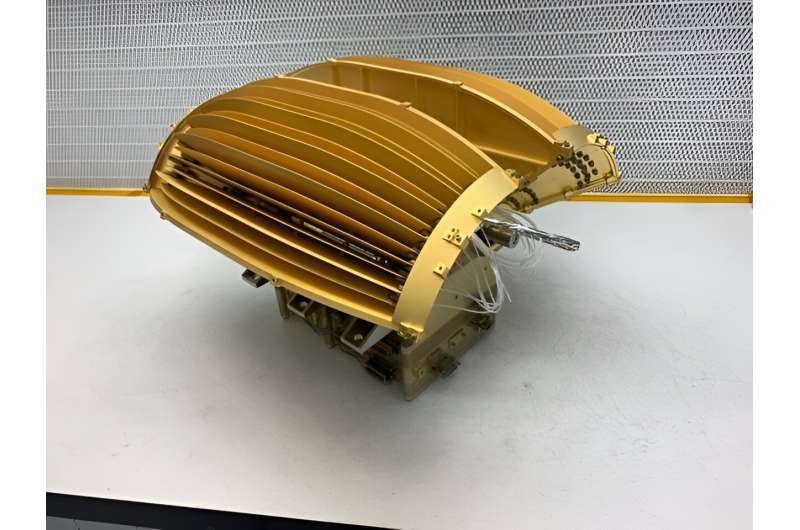
Another of the instruments planned for flight aboard NASA's Interstellar Mapping and Acceleration Probe (IMAP) is ready for installation on the spacecraft.
IMAP-Ultra is a particle imager capable of capturing energetic neutral atoms (ENAs), particularly hydrogen atoms and is the third instrument to be delivered for integration. Engineers will now perform a series of tests to ensure Ultra can properly communicate with the spacecraft before it is fully integrated into the IMAP structure and into the onboard electronics system.
IMAP-Ultra is one of three imagers on IMAP that capture ENAs traveling from the boundary of our solar system. When charged particles from the solar wind reach our outer heliosphere, they interact with interstellar neutral particles and transform into ENAs. ENAs still retain information about the original charged particles, but losing their charge allows them to travel through space unbounded by the sun's magnetic field and eventually reach IMAP.
NASA delivers science instrument to JAXA's Martian Moons mission
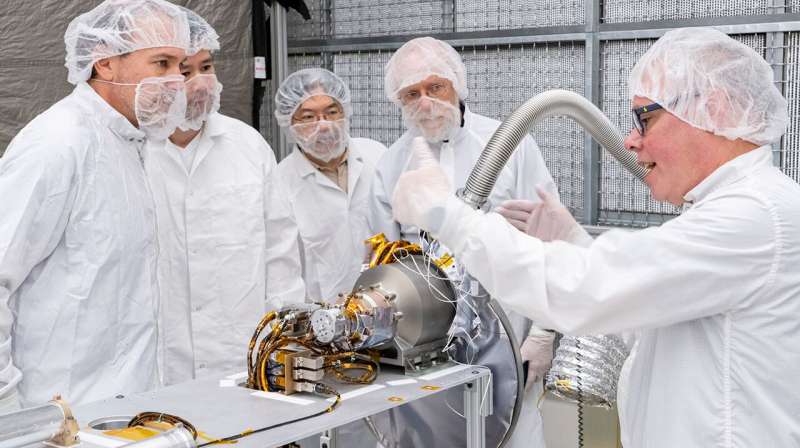
On March 14, NASA handed over its gamma-ray and neutron spectrometer instrument to JAXA (Japan Aerospace Exploration Agency) for integration onto JAXA's MMX (Martian Moons eXploration) mission spacecraft and final system-level testing.
NASA's Mars-moon Exploration with Gamma Ray and Neutrons (MEGANE) instrument, developed by the Johns Hopkins Applied Physics Laboratory (APL) in Laurel, Maryland, in collaboration with colleagues from Lawrence Livermore National Laboratory (LLNL) in California, will play a major role in the MMX mission, which aims to characterize and determine the origin of Mars' moons Phobos and Deimos and deliver a sample from Phobos to Earth.
Scientists suspect the asteroid-sized bodies either are remnants of an ancient collision between Mars and a large impactor or are themselves asteroids captured by Mars' gravity.
Artist's view of the Ariane 6 flight model-1
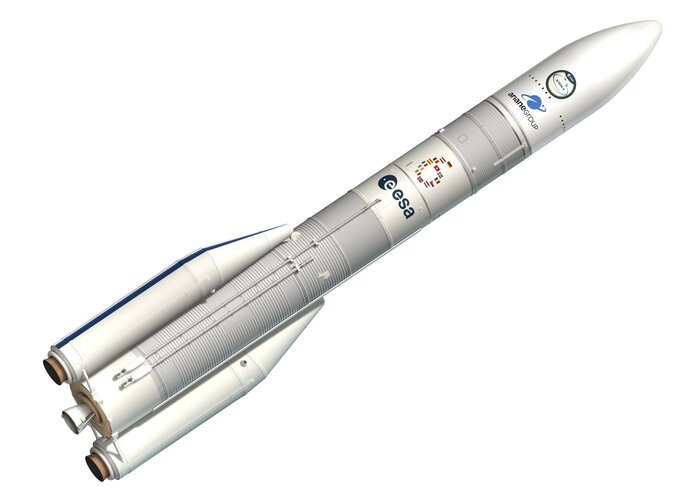 Image:
Artist's view of the Ariane 6 flight model-1
Image:
Artist's view of the Ariane 6 flight model-1 
